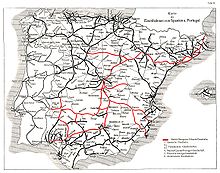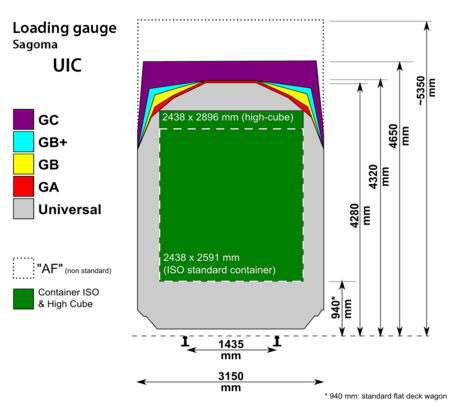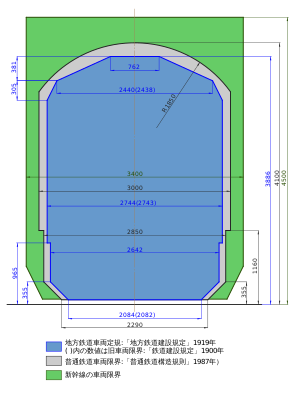History of rail transport in Spain
This article needs additional citations for verification. (November 2009) |

The history of rail transport in Spain begins in the 19th century. In 1848, a railway line between Barcelona and Mataró was inaugurated,[1] although a line in Cuba (then a Spanish overseas province) connecting Havana and Bejucal had already opened in 1837.[2] In 1852 the first narrow gauge line was built, in 1863 a line reached the Portuguese border. By 1864 the Madrid-Irun line had been opened, and the French border reached.[1]
In 1911 the first line to be electrified was the Gergal-Santa Fe line.[1]
The last steam locomotive was withdrawn in 1975, in 1986 the maximum speed on the railways was raised to 160 km/h (99 mph), and in 1992 the Madrid Seville high speed line opened,[1] beginning the process of building a nationwide high speed network.
Development


Railway transport was first developed in Northern Europe during the 19th century, spurred not only by rapid economic growth, but also by landscapes favourable to railway construction. The mountainous terrain, low population density, relatively weak 19th century economic development and political up-and-downs hindered the development of the
A major company, the
One key development was the decision, taken at an early stage, that Spain's railways should be built to an unusual
The decision for an Iberian gauge would later come to hinder interoperability of rail services with France, and it also made railway construction more expensive. Apart from the widespread broad-gauge lines, a large system of
The main-line network was roughly complete by the 1870s. Because of Spain's (until recently) relative lack of economic development, the Spanish railway network never became as extensive as those of most other European countries. For instance, in terms of land area Spain is about 2.5 times the size of Great Britain but its railway network is about 3,000 km (1,900 mi) smaller.
During the Spanish Civil War in the 1930s the railway network was extensively damaged.
Nationalization of rail network
Immediately after the war
It took many years for the railway system to recover from the war. In spite of this, innovators like Goicoechea created advanced trains like the Talgo and the TER. Only with the Spanish transition to democracy in 1975, did the Spanish railway network begin to modernize and catch up with the rest of Europe.[citation needed]

Following the
In 1986/7, many radial routes were closed: thousands of kilometres of passenger lines were axed.
The Railway Sector Act of 2003 separated the management, maintenance and construction of rail infrastructure from train operation. The former is now the responsibility of
High speed

In recent years Spain's railways have received very heavy investment, much of it coming from the
The Madrid-Barcelona line is being extended onwards via an international
, also under construction, will link the three Basque cities.In June 2011,
Loading Gauge
Width



Thus
See also
- Ferrocarriles Españoles de Vía Estrecha
- History of rail transport
- Iberian-gauge railways
- Rail transport in Spain
- Red Nacional de los Ferrocarriles Españoles (RENFE)
- Renfe
References
- ^ a b c d e Significant events in the history of Spanish infrastructures and railways www.fomento.es
- ^ Tovar, Julio (21 June 2020). "Breve historia de la esclavitud en España". CTXT.
- ^ "España en líneas" (PDF). museo del Ferrocarril. p. 10.
- ISSN 0211-0849.
- ^ Ruzafa Ortega 2018, p. 33.
- JSTOR 26543241.
- ^ Rubio, Javier (27 January 2010). "Línea férrea Madrid-Sevilla: de los Rothschild al AVE". El Mundo.
- ISSN 1134-2277.
- )
- ^ "Heads roll in Spain over trains too wide for tunnels". Stuff/Fairfax. 2023.
- ^ "Renfe suprimeix l'AVE Toledo-Albacete-Conca per manca de viatgers". 27 June 2011.
- ^ CCMA (27 June 2011). "Renfe suprimeix l'AVE Toledo-Albacete-Conca per manca de viatgers" (in Catalan). Retrieved 2016-02-06.
External links
- Winchester, Clarence, ed. (1936), "Spain and Portugal", Railway Wonders of the World, pp. 1473–1480 illustrated description of the railways of Spain and Portugal
